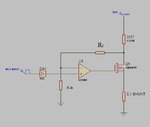Ashkar
Full Member level 2
@Klaus
I got to look at the datasheet and your opinion looks promising.
I want to know that I also need to calculate the current in a shunt that is also connnected in the circuit with the DUT Device as the known value of the shunt is important to calculate the resistance of DUT,So can I just measure the voltage drop across PFET DRAIN and SOURCE TERMINALS.
I got to look at the datasheet and your opinion looks promising.
I want to know that I also need to calculate the current in a shunt that is also connnected in the circuit with the DUT Device as the known value of the shunt is important to calculate the resistance of DUT,So can I just measure the voltage drop across PFET DRAIN and SOURCE TERMINALS.
